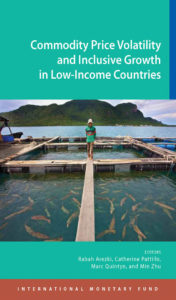 Paper prepared for the book jointly edited by Rabah Aretzki, Catherine Patillo, Marc Quintyn et Min Zhu (2012), Commodity Price Volatility and Inclusive Growth in Low-Income Countries, Washington D.C.: International Monetary Fund (chapter 16, pp. 315-330).
Paper prepared for the book jointly edited by Rabah Aretzki, Catherine Patillo, Marc Quintyn et Min Zhu (2012), Commodity Price Volatility and Inclusive Growth in Low-Income Countries, Washington D.C.: International Monetary Fund (chapter 16, pp. 315-330).
There are five key messages in this chapter about the international policy challenge with food security and price volatility. First, the objective of food security and a successful approach to food price volatility requires active public policies. However, these policies do not exist and need to be developed, keeping several characteristics in mind—there is no one-size-fits-all model, so that the design and nature of these policies will have to be local, with local ownership an essential element, and the nature of these policies will not resemble the top-down and exclusive nature of past public policies in developed countries. The rules of the game have changed, both in industrial and in developing countries, and successful public policies nowadays must be based on the involvement of the various stakeholders. The state therefore appears as a coordinator and a catalyst.
Second, a key ingredient of such policies will be a successful, revisited, public-private partnership. The private sector should increasingly be tied by memorandum of understanding and contracts with governments, through which they commit their contribution to a common goal within a sector-based program in exchange for specific regulatory, pricing, and other guarantees and for complementary public investments that will also strengthen their own effectiveness and profitability.
Third, this multi-stakeholder, catalytic approach can also be applied at the international level, where the G20 can play (and has played) a significant role in aligning actions and priorities. The G20 thus appears more as a process, conducted at the highest political level, than a world directory, and it may uniquely provide leadership, inspiration, and direction. Much pedagogy is necessary to disseminate such an interpretation to the media, to the general public, and to government circles as well to align expectations with the reality.
Fourth, much more attention needs to be paid to agriculture risks. Risk-based approaches, so far, have been essentially addressed through specific instruments leading to implementing pilots in developing countries, while farm policies and much donor financing (outside such pilots) have tended to ignore the risks. Risk is a crucial aspect of agricultural development and of food security, and its management is not simply a question of finding the right instrument, but is a core of the nature and effectiveness of development programs. But risk is also multidimensional and needs to be addressed in a holistic way. It includes, among others, price, weather, pests, and climate risks, and dealing with just one of these factors would be insufficient. Proper risk management requires a new culture of public policy, well beyond a necessary, conceptual, and practical knowledge of available financial instruments.
Finally, a key message is the need for more coordination among actors (both domestic and international), who tend to work in silos, across sectors, and between policies.
The chapter can be read here
The full book can be downloaded here
